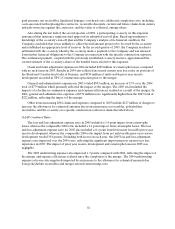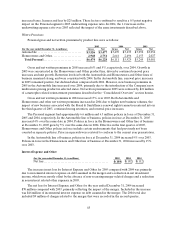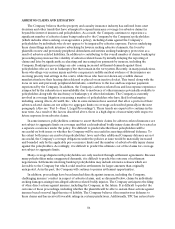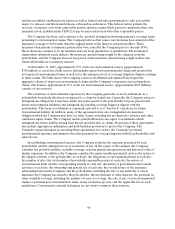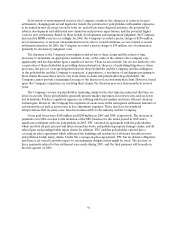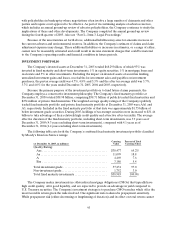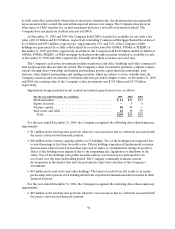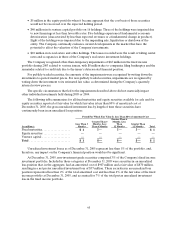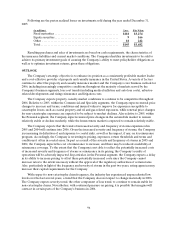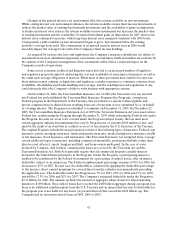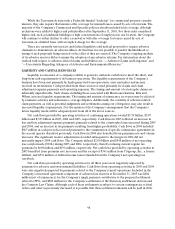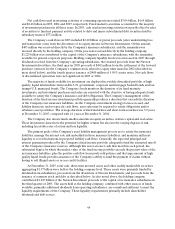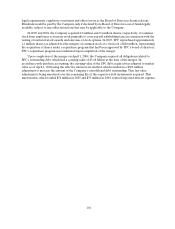Travelers 2005 Annual Report Download - page 103
Download and view the complete annual report
Please find page 103 of the 2005 Travelers annual report below. You can navigate through the pages in the report by either clicking on the pages listed below, or by using the keyword search tool below to find specific information within the annual report.91
In its review of environmental reserves, the Company considers: the adequacy of reserves for past
settlements; changing judicial and legislative trends; the potential for policyholders with smaller exposures
to be named in new clean-up action for both on- and off-site waste disposal activities; the potential for
adverse development and additional new claims beyond previous expectations; and the potential higher
costs for new settlements. Based on these trends, developments and management judgment, the Company
increased its IBNR reserves accordingly. In 2004, the Company recorded a pretax charge of $290 million,
net of reinsurance, to increase environmental reserves due to revised estimates of costs related to recent
settlement initiatives. In 2005, the Company recorded a pretax charge of $30 million, net of reinsurance,
primarily for declaratory judgment costs.
The duration of the Company’s investigation and review of these claims and the extent of time
necessary to determine an appropriate estimate, if any, of the value of the claim to the Company vary
significantly and are dependent upon a number of factors. These factors include, but are not limited to, the
cooperation of the policyholder in providing claim information, the pace of underlying litigation or claim
processes, the pace of coverage litigation between the policyholder and the Company and the willingness
of the policyholder and the Company to negotiate, if appropriate, a resolution of any dispute pertaining to
these claims. Because these factors vary from claim-to-claim and policyholder-by-policyholder, the
Company cannot provide a meaningful average of the duration of an environmental claim. However, based
upon the Company’s experience in resolving these claims, the duration may vary from months to several
years.
The Company’s review of policyholders tendering claims for the first time has indicated that they are
lower in severity. These policyholders generally present smaller exposures, have fewer sites and are lower
tier defendants. Further, regulatory agencies are utilizing risk-based analysis and more efficient clean-up
technologies. However, the Company has experienced an increase in the anticipated settlement amounts of
certain matters as well as an increase in loss adjustment expenses. There also have been judicial
interpretations that, in some cases, have been unfavorable to the industry and the Company.
Gross paid losses were $248 million and $200 million in2005 and 2004, respectively. The increase in
payments over 2004 was due to the inclusion of the SPC business for the entire period in 2005 and a
significant settlement with one policyholder in 2005. TPC executed an agreement with this policyholder
which resolved all past, present and future hazardous waste and pollution property damage claims, and all
related past and pending bodily injury claims. In addition, TPC and this policyholder entered into a
coverage-in-place agreement which addressed the handling and resolution of all future hazardous waste
and pollution bodily injury claims. Under the coverage-in-place agreement, TPC has no defense obligation,
and there is an overall cap with respect to any indemnity obligation that might be owed. The first two of
three payments related to this settlement were made during 2005, and the final payment will be made in
the first quarter of 2006.


